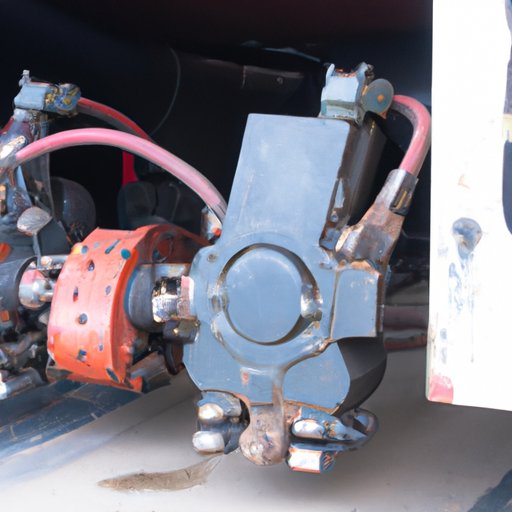Introduction
Air brake systems are used on large trucks and buses to help slow down and stop the vehicle. They are an essential part of any heavy-duty vehicle operation, as they provide a safe, reliable way for drivers to control their speed and come to a stop when needed. In this article, we will explore the basics of air brake systems, how they work and the components that make them up.
Step-by-Step Guide to Understanding Air Brake Systems
First, let’s take a look at the basics of air brakes: how do they work? Air brakes use compressed air to actuate the brakes. The air is stored in tanks, which is then released through a series of valves and hoses to the brakes when the driver presses the brake pedal. The air pressure pushes against the brake shoes, causing them to press against the brake drums and slow down the vehicle.
Now that we understand the basic concept of air brakes, let’s examine the components of an air brake system. An air brake system consists of several key components: an air compressor, air tanks, valves, lines, and brake shoes. The air compressor is responsible for compressing air and storing it in the air tanks. The valves control the flow of air from the tanks to the brakes, while the lines connect the tanks to the brakes. Finally, the brake shoes are what actually press against the brake drums to slow down the vehicle.
A Comprehensive Overview of Air Brake Mechanics
To truly understand how air brakes work, we must delve into the science behind them. Air brakes rely on the principles of hydraulics and pneumatics to function. When the driver presses the brake pedal, air is released from the tanks, creating pressure in the lines. This pressure is then transferred to the brakes, pushing the brake shoes against the brake drums. The friction created between the two slows down the vehicle.
In addition to the basic mechanics of air brakes, there is also a significant amount of technology involved. Many modern air brake systems are equipped with Electronic Control Units (ECUs), which allow for more precise control of the brakes. ECUs monitor the air pressure in the lines and adjust the brakes accordingly. This ensures that the brakes are always operating at the optimal level, providing a safe and efficient braking system.
Furthermore, some air brake systems are equipped with anti-lock braking systems (ABS). ABS helps prevent wheel lockup during braking, allowing the wheels to continue to turn even when the brakes are applied. This improves traction and prevents skidding, making for a much safer driving experience.
Conclusion
In conclusion, air brake systems are an essential component of any heavy-duty vehicle. They use compressed air to actuate the brakes, allowing for a safe and reliable way to slow down and stop the vehicle. We have explored the basics of air brakes, examined the components of an air brake system, and discussed the science and technology behind them. Air brakes offer a powerful and efficient braking system, ensuring that vehicles can be safely operated at all times.
With this comprehensive overview of air brake mechanics, you now have a better understanding of how air brakes work. Whether you’re a truck driver or a mechanic, having a clear understanding of air brakes is essential for safe and effective operation of any heavy-duty vehicle.
(Note: Is this article not meeting your expectations? Do you have knowledge or insights to share? Unlock new opportunities and expand your reach by joining our authors team. Click Registration to join us and share your expertise with our readers.)
